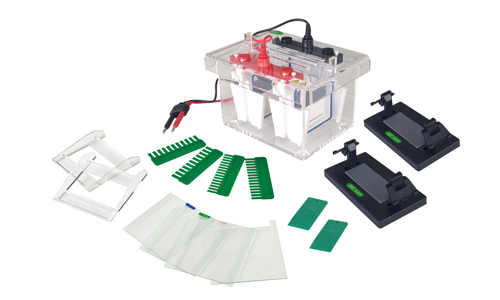Electrophoresis is an important tool for the separation and analysis of biological macromolecules, such as proteins, enzymes, nucleic acids, lipids and carbohydrates. This technique has been widely used in the microbiology laboratory, from the identification of microorganisms and quantification of protein expression to the study of genetic patterns. This form of analysis has greatly assisted microbiologists in obtaining accurate results that might not otherwise be possible.
In addition, electrophoresis can be used to analyze changes in protein expression in microorganisms. This is done by two-dimensional electrophoresis, a technique that allows proteins to be separated according to their molecular mass and charge. This analysis tool is useful for understanding the function of proteins in microorganisms and how their expression changes with environmental changes.
Application of electrophoresis in microbiology
Electrophoresis is a molecule separation technique in which samples are passed through a gel containing a solid agent, such as agarose or polyacrylamide. The molecules are pushed through the gel by an electric current, allowing separation of the components according to their size and charge. This separation technique has been widely used in the microbiology laboratory for the identification of microorganisms and to study their gene expression.
Pulsed field gel electrophoresis (PFGE) is one of the most common methods of electrophoresis in microbiology. It is used to identify genetic patterns, allowing scientists to differentiate between different microbial strains. This technique is also used to obtain information on the adaptation of strains to environmental changes, which is useful for understanding the dynamics of microbial evolution.
Another important application of electrophoresis in the microbiology laboratory is the quantification of gene expression. This can be done by RNA filtration gel electrophoresis or two-dimensional electrophoresis, which provides accurate data on the level of gene transcription in microorganisms. These data are useful for understanding the role of genes in microbial function.
Advantages of electrophoresis in microbiology
One of the main advantages of electrophoresis is the ability to obtain accurate and consistent results. This separation technique is performed in a controlled environment, which allows reliable data to be obtained. This reliability is due to the fact that the materials and parameters are kept constant throughout the separation process. This consistency makes electrophoresis a very interesting analysis technique for microbiologists.
Another advantage of electrophoresis in the microbiology laboratory is the ability to separate molecular components with a wide variety of sizes, charges and complexities. This flexibility makes electrophoresis a useful tool for many different applications, from quantification of gene expression to identification of genetic patterns.
What we offer at Kalstein
Electrophoresis offers a wide range of advantages and applications in the microbiology laboratory. This analytical tool is useful for the separation and quantification of biological molecules, and allows microbiologists to obtain accurate and consistent results. This information is useful for studying the adaptation of microorganisms to environmental changes and understands the role of genes in microbial function. Therefore, the use of electrophoresis is an invaluable tool for microbiologists.
We at Kalstein care about offering you the best equipment for electrophoresis, at the best price, and with excellent quality materials that cover the requirements demanded by microbiology laboratories, because we are manufacturers, we guarantee the follow-up of your purchase, and we accompany you before, during and after acquiring our equipment; know our electrophoresis equipment HERE.

